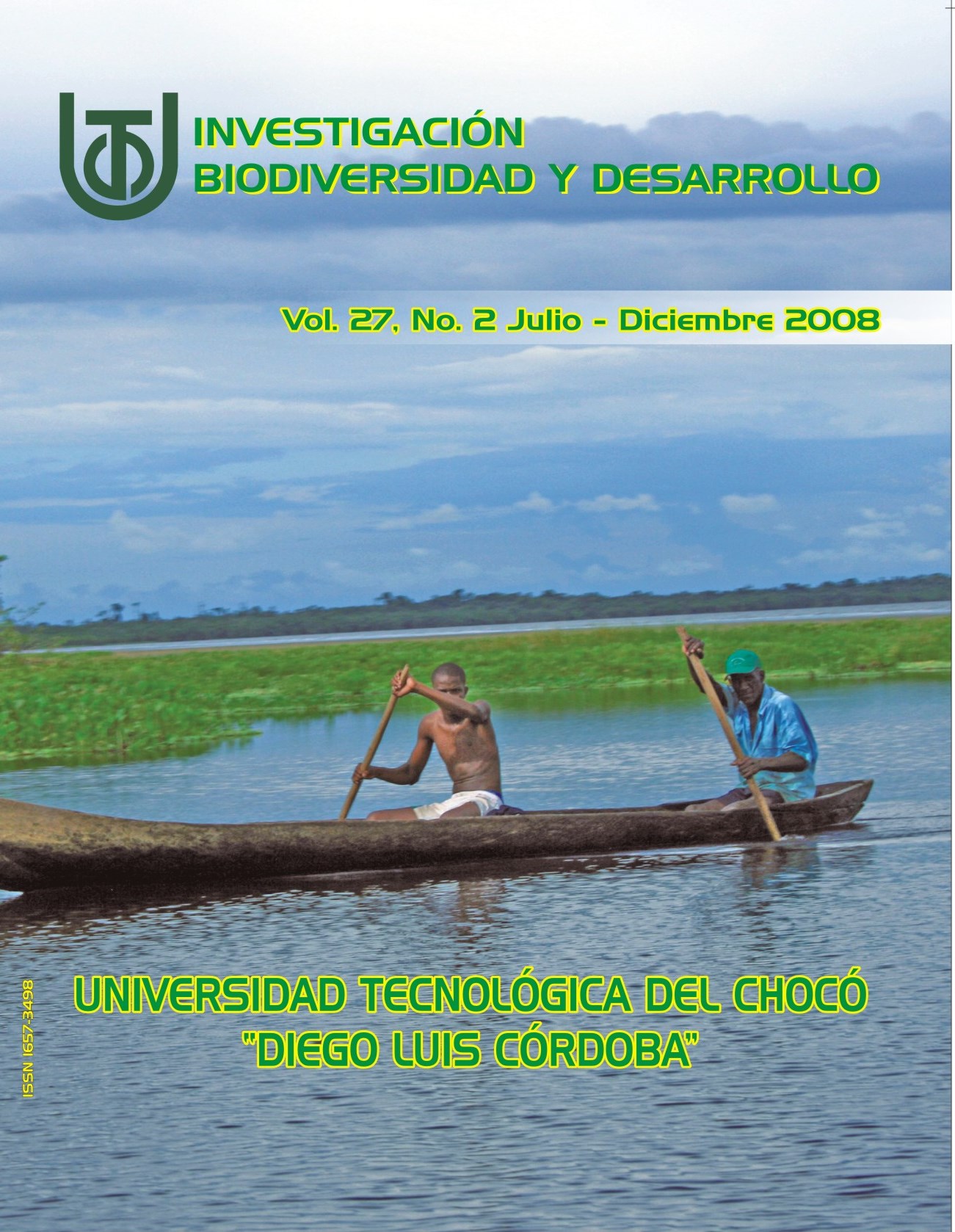CULTIVATED AND WILD PLANT GENETIC RESOURCES FROM CHOCÓ DEPARTMENT COLOMBIA
DOI:
https://doi.org/10.18636/biodesarrollo.v27i2.444Palabras clave:
ultivated and wild edible plant, Chocó department, Plant genetic resources.Resumen
The department of Chocó, Colombia is an area with a great diversity of plants, many of which are used for food purposes. A study (1999–2002) made for cultivated and wild edible plants in some river basins and markets of the Department found 75 species (33 cultivated, 35 wild or naturalized, and 7 both cultivated and naturalized or adventitious) from 25 botanical families. Results are presented on the features specific to the Chocó, and on the importance and value of each species. Most species, either cultivated or wild, are destined for local markets, although some cash crops exist (mainly banana and cocoa). Several species, like borojó (Borojoa patinoi), are endemic to the Chocó. Also, some types of rice and maize able to resist seawater intrusions are of particular interest. It is remarkable that a significant number of the plants used are wild or naturalized, with many plants from other regions seemingly adapted well to the natural environment of the Chocó. In general, a great diversity of types exists within each species, and, in the case of cultivated plants, there are few improved varieties. In conclusion, in the Chocó there is a great diversity of plants used for food purposes and a considerable associated ethnobotanical knowledge, which has mostly remained neglected and unknown to the rest of the world.

